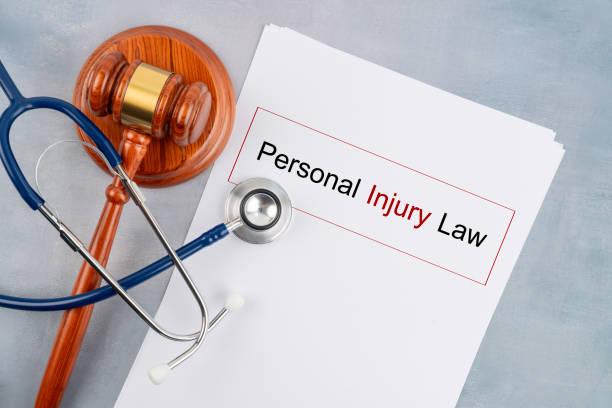- 18 Oct 2025

Personal injury litigation in the United States frequently depends on the quality and strength of available evidence. Eyewitness testimony can offer invaluable perspective on how an incident unfolded and which party bears responsibility. However, what happens when no bystanders observed the accident? Is it possible to seek justice and financial recovery without eyewitness accounts? The answer is definitively yes. Personal injury lawsuits can proceed successfully without witnesses, although they present unique obstacles that require strategic use of alternative evidence types.
This comprehensive analysis examines how American courts handle cases lacking eyewitness testimony, explores evidence alternatives that can replace or enhance witness statements, and outlines legal approaches that can still yield successful personal injury outcomes.
Personal injury claims emerge when individuals suffer harm due to another party’s negligent actions or deliberate wrongdoing. These cases encompass diverse situations including automobile collisions, premises liability incidents, medical negligence, and product defects.
Successful personal injury litigation requires plaintiffs to establish four fundamental legal elements:
Duty of care: The defendant owed a legal obligation to exercise reasonable care in their actions.
Breach of duty: The defendant failed to meet their established duty of care.
Causation: The defendant’s breach directly resulted in the plaintiff’s injuries.
Damages: The plaintiff experienced measurable physical, emotional, or economic losses.
While eyewitnesses can provide firsthand accounts that help establish incident details and defendant negligence, their absence does not automatically undermine a valid claim.
Eyewitness testimony serves important functions in personal injury cases by:
Nevertheless, the legal framework acknowledges that injuries frequently occur without public observation. Consider scenarios like slipping on poorly maintained stairs in an empty building or suffering harm from a defective household product. These situations naturally lack third-party witnesses.
When eyewitnesses are unavailable, successful cases rely on comprehensive evidence collection, thorough documentation, and professional expert analysis.
Multiple evidence categories can effectively substitute for eyewitness accounts in proving liability and damages:
Images capturing the accident location, sustained injuries, property damage, and environmental conditions can vividly illustrate incident circumstances. Security cameras, traffic monitoring systems, or personal recording devices might capture real-time footage, providing compelling visual evidence.
Healthcare records form the foundation of every personal injury case. These documents demonstrate injury severity, treatment timelines, and establish clear connections between the incident and resulting health problems. Physician diagnoses can definitively link injuries to the accident in question.
When law enforcement responds to accidents, their reports often contain valuable observations, participant statements, and preliminary fault determinations. Similarly, incident documentation filed by businesses, property owners, or institutions can corroborate the plaintiff’s account.
Although not present during the incident, expert witnesses provide specialized knowledge to establish liability. Accident reconstruction professionals, medical specialists, or engineering consultants can offer authoritative opinions based on available evidence. For instance, biomechanical experts might explain how specific crash dynamics produce particular injury patterns.
Video evidence from nearby properties, intersection cameras, or vehicle-mounted recording devices can provide direct or supporting evidence for plaintiff claims.
While potentially viewed as self-interested, the injured party’s testimony remains legally admissible evidence. This testimony gains credibility when supported by consistent physical evidence and professional documentation.
Although witnesses are not legally required, their absence can create several challenges:
Credibility concerns: Courts and juries may approach self-serving testimony with skepticism unless strongly corroborated by independent evidence.
Greater dependence on circumstantial proof: Without direct witness accounts, attorneys must construct cases using inferences drawn from physical evidence and expert analysis.
Insurance company pushback: Insurers frequently exploit the absence of witness corroboration to deny claims or minimize settlement offers, particularly in disputed liability situations.
These challenges explain why personal injury attorneys prioritize rapid collection of objective, third-party evidence during initial case investigation.
When pursuing personal injury claims without eyewitness support, consider implementing these strategic approaches:
Skilled personal injury attorneys possess the expertise to conduct comprehensive investigations, compile supporting evidence, and construct persuasive case narratives despite absent eyewitnesses. They also negotiate more effectively with insurance companies and counter attempts to discredit claims.
Time-sensitive evidence like road markings, structural damage, or environmental conditions must be documented immediately before deterioration or removal.
Professional experts provide authoritative opinions on causation and damages that prove crucial when direct witnesses are unavailable. Early expert involvement also enhances overall claim credibility.
Modern technology often provides objective insights through smartphone data, vehicle event recorders, or GPS tracking information. Vehicle computer systems might reveal speed, braking patterns, or impact forces preceding accidents.
Detailed records of post-incident symptoms, medical treatments, and emotional impacts help prove damages. Contemporary journals and personal notes can provide admissible and persuasive evidence when maintained alongside medical care.
Several scenarios demonstrate how claims can succeed without eyewitness testimony:
Retail Slip and Fall Incidents: Security recordings, weather documentation, and maintenance schedules can establish negligence through evidence of hazardous conditions without adequate warnings.
Remote Area Vehicle Accidents: Police reconstruction specialists use tire impressions, vehicle damage patterns, and crash physics to determine fault responsibility.
Defective Product Cases: Engineering analysis and manufacturing documentation can establish design defects or safety standard violations without requiring witness observation.
Each situation demonstrates the same fundamental principle: successful outcomes depend on credible, compelling, and professionally presented evidence rather than bystander testimony.
While eyewitness testimony certainly strengthens personal injury cases in the United States, it does not constitute a mandatory requirement. Plaintiffs can successfully obtain compensation through strategic combination of physical evidence, expert testimony, comprehensive documentation, and effective legal representation.
If you are considering litigation and worry about lacking witnesses, do not assume your case lacks merit. Consult with qualified legal counsel who can evaluate your available evidence, identify viable legal options, and develop a persuasive claim strategy.
Keep in mind that every case presents unique circumstances, and achieving justice requires proof rather than an audience.